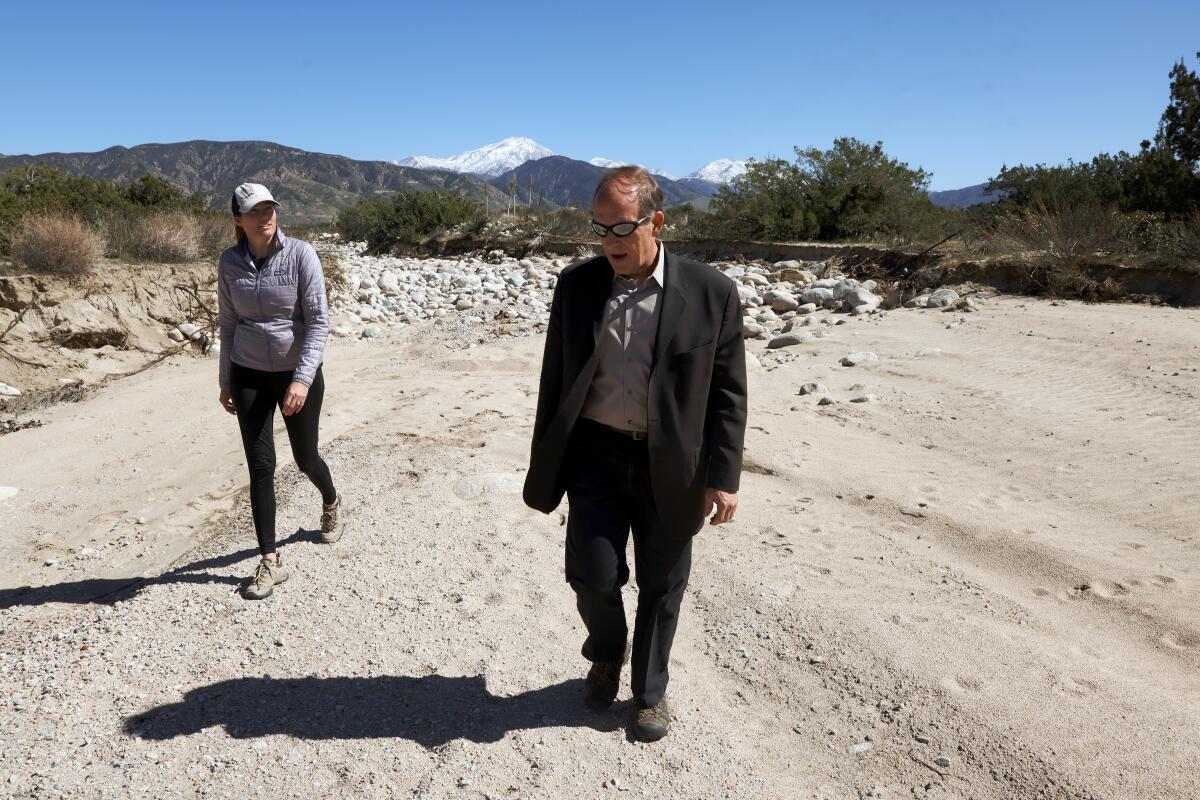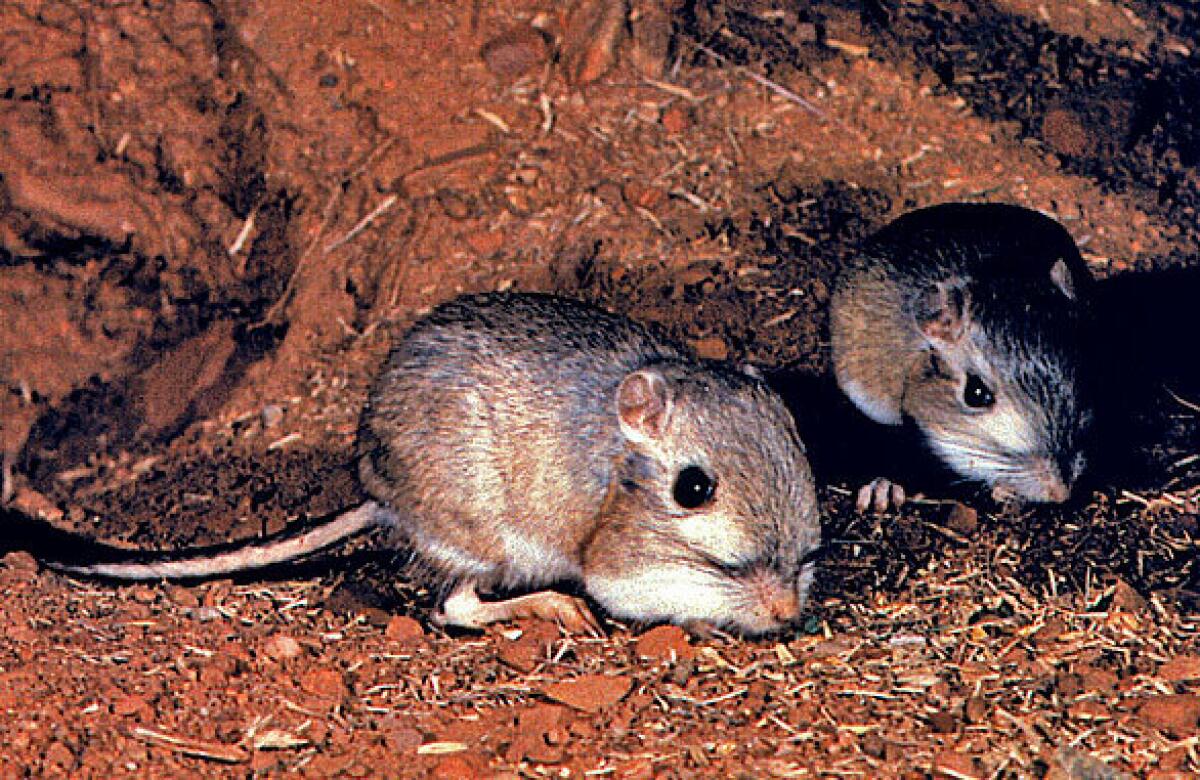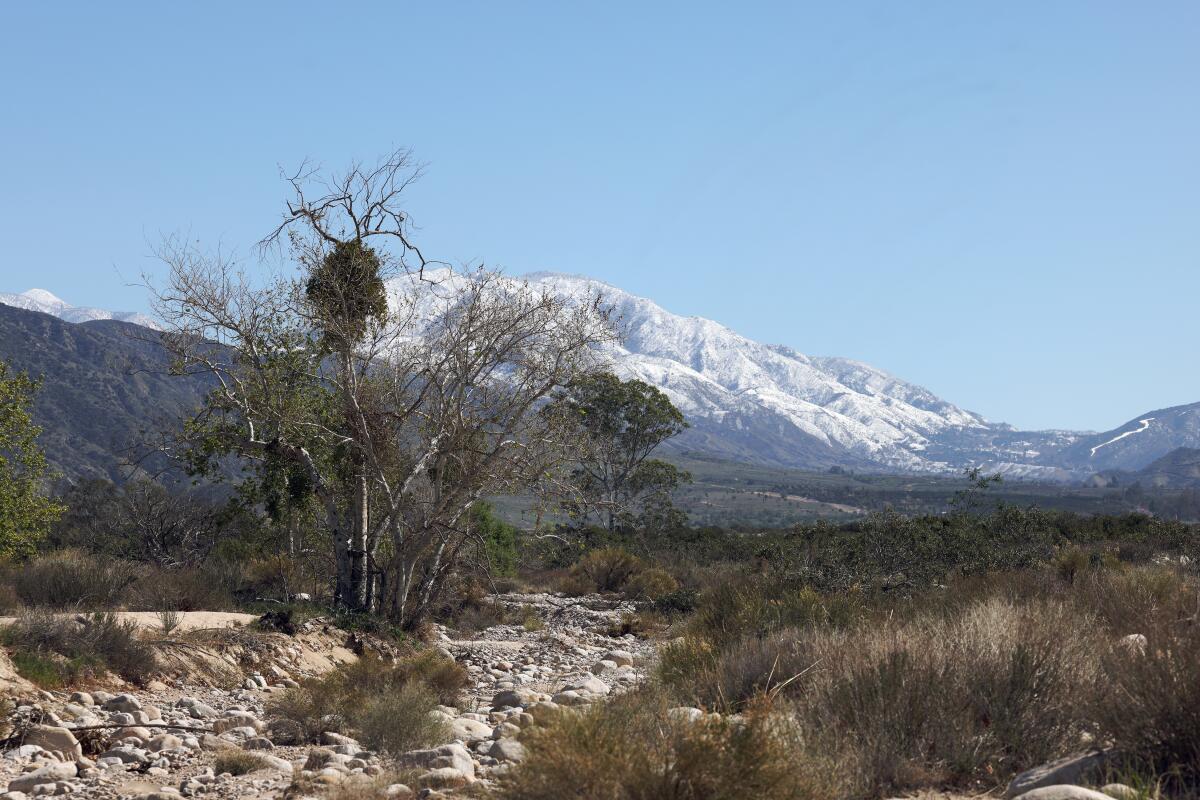Can a fragile rat survive the loopholes in endangered species protections?

When California declared the San Bernardino kangaroo rat an endangered species recently, conservationists rejoiced. The state designation seemed to promise stronger protections for the tiny, seed-munching rodent.
Although the U.S. Fish and Wildlife Service had declared the high-jumping rat an endangered species more than 20 years ago, environmentalists argued that federal protections were doing little to preserve the animalâs dwindling habitat. More needed to be done, they successfully argued.
But last monthâs celebration was short-lived. Defenders of the fragile desert dweller now fear the countdown to extinction has resumed. In addition to losing 95% of its historic habitat to development since 1998 â the year it was federally listed as endangered â attempts to transplant the animal to other desert areas have mysteriously failed.
âMany people think that getting an animal listed as endangered means this: Boom. Done. Everything is wonderful,â said Dan Silver, executive director of the nonprofit Endangered Habitats League. âBut thatâs not the case.â
The stateâs action helps, he said, âbut it is only the starting gate for new rounds of negotiations, mitigation and possible litigation that may take years to resolve.â

Rat advocate David Goodward, a former member of the San Bernardino Valley Audubon board of directors, agreed.
âThe trouble starts,â he said, âthe moment that talk turns to estimating the value of a targeted patch of habitat and what kind of development on it is appropriate under state or federal endangered species regulations.â
Conservation success stories tend to involve high-profile charismatic animals such as the bald eagle, California condor and Chinook salmon, which attract the funding, habitat and political will needed for their protection and recovery.
But most species diminish because the Endangered Species Act has not substantially stemmed threats including disease, habitat loss, invasive species, climate change, wildfires, and pollution in California, which ranks only behind Hawaii in endangered species because of its diverse geography and rapid development.
At stake is some of the most valuable land in the state and the fate of rare plants and animals pushed into tiny corners of remnant suitable habitat where they will likely remain endangered because their hold on existence is so tenuous.
They include the western desert tortoise, the southwestern willow flycatcher, the tricolored blackbird, the desert slender salamander, the Southern California mountain yellow-legged frog and the Quino checkerspot butterfly, whose plight has been described by a biologist as âfour engines out and about 10 seconds to impact.â

Criticism is not new to the Endangered Species Act, which requires landowners in most cases to create a habitat conservation plan, the compromise solution for resolving conflicts. These plans spell out how wildlife losses will be mitigated, usually by setting aside land elsewhere solely for the species.
But social, economic and political trade-offs influence the process.
The grassroots campaign to save the 3-inch rat, which hops out of harmâs way like a kangaroo, was stymied by the Trump administrationâs attempts to weaken federal protections for imperiled species.
The rat is adapted to the alluvial sand of meandering flood plains, rocky channels, grasslands and sage where its biggest long-term threat is habitat fragmentation caused by sand-and-gravel operations, highway construction, suburban tracts and commercial centers.
In 2002, the U.S. Fish and Wildlife Service had designated 33,295 acres as critical habitat for the rat, but by 2018 only 16,000 acres were considered functional, including a portion of Lytle Creek Wash in Rialto, where new homes are planned.
The Trump administration in 2019 unveiled a rollback of federal endangered species regulations that for the first time allowed federal authorities to consider the economic cost of protecting a particular species.
Before that, the Endangered Habitats League had spent months investigating the administrationâs connections and communications with Irvine-based Lytle Creek Development Co. and its plans to build an 8,407-home development in designated critical habitat in Rialto.
Through a Freedom of Information Act request, the group learned that Ron Pharris, the companyâs chairman, had reached out via email on July 12, 2018, to a legislative assistant for Rep. Ken Calvert (R-Corona), asking for help in âmoving this important project forward.â
Pharris said he wanted a personal meeting with then-Assistant Interior Secretary Susan Combs, a Trump appointee who had referred to endangered species listings as âincoming Scud missiles.â He planned to express his concerns that the federal biologists reviewing the environmental effects of the planned community would call for removing as much as one-third of the projectâs footprint to protect the rat and its habitat.
On July 26, 2018, Paul Souza, then regional director of U.S. Fish and Wildlifeâs Pacific Southwest region, sent an email alerting his staff that the developer had bypassed the office and taken its concerns directly to Washington.
âPlease make the point that the regional office is prepared to work with the developer and find a fair and reasonable solution,â he said.
The service subsequently issued a draft biological opinion concluding that the Rialto development would not be the death knell for the rat â even though the subdivision would cover 1,043 acres of critical habitat.
The California Fish and Game Commission in 2019 declared the rat a candidate for listing but declined to endorse the Endangered Habitats Leagueâs argument about âpolitization of regulatory agencies.â
Around the same time, Gov. Gavin Newsom vetoed Senate Bill 1 â legislation that would have called for California to step in and adopt any federal environmental protection that the Trump administration attempted to gut.
Last month, the rat was formally added to the stateâs list of endangered species, a designation that could create obstacles to development of the Rialto housing project.
Pharris was unavailable for comment. But in an earlier interview, he told The Times: âI just do my thing â and yes, that includes conversations at both the state and federal level.â
In the meantime, attempts to translocate rats to potentially suitable habitat elsewhere have met with little to no success, and scientists are not sure why.
Today, the rat exists in three isolated populations, one of the largest of which clings to existence on 5,000 acres of alluvial floodplains on the southern flanks of the San Bernardino Mountains. The area is managed by the San Bernardino Valley Water Conservation District and the U.S. Bureau of Land Management to recharge regional aquifers with snowmelt and stormwater.
At first glance, the area looks desolate, hardly a place for a wildlife refuge. But myriad tracks in the soft sand reveal the complex relationships of its native species: kangaroo rats, cactus wrens and an array of predators including great horned owls, coyotes and rattlesnakes.
A habitat conservation plan hammered out a decade ago to ensure the survival of the kangaroo rat population has become a source of pride for the water conservation district.
On a recent morning, as hammers and saws clamored at a nearby construction site, Daniel Cozad, the districtâs general manager, said, âOur main mission here for more than a century has been to conserve water for communities of San Bernardino County.
âFor the past 10 years,â he added, âweâve also been working hard to make this a better world for the kangaroo rat.â







